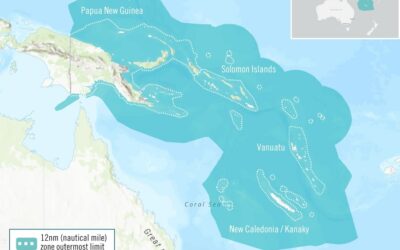This post was originally published on Healthy Forest
The tragic wildfires in Los Angeles have reignited national discussions about forest management, wildland firefighting, smoke pollution, and water.
Although these urban fires are not traditional forest fires, they underscore the critical need for effective vegetation management and robust water infrastructure and availability.
Wildfires require three elements: fuel, oxygen, and heat. While weather conditions and oxygen levels are beyond human control, managing the available fuel—such as overgrown vegetation—is within our capabilities.

Proactively reducing excess vegetation through methods like forest thinning and creating fuel breaks can significantly mitigate wildfire risks.
These measures not only slow the spread of fires but also provide firefighters with safer and more effective opportunities to protect lives, homes, wildlife habitats, and water resources.
President-elect Donald Trump has criticized California’s forest management practices and water policies, suggesting decades of mismanagement have contributed to the severity of the fires.
Governor Newsom has defended his administration, emphasizing the state’s investments in firefighting and vegetation management.
Critics, however, point to onerous environmental regulations and bureaucracy that have stymied efforts to increase the pace and scale of fuels reduction. They also say recent budget cuts have affected fire prevention programs, potentially exacerbating wildfire risks.
The Los Angeles fires highlighted challenges in water supply during emergencies. In Pacific Palisades, for instance, fire hydrants ran dry as the local water system was overwhelmed by the demands of firefighting efforts.
Beyond fire prevention, active forest management plays a significant role in water conservation. Overgrown forests consume substantial amounts of water, reducing availability for aquifers and downstream flows. The resulting wildfires can devastate watersheds and aquatic resources.
Researchers have found that over the period 1990 to 2008, fire-thinned forests saved 3.7 billion gallons of water annually in California’s Kings River Basin and a whopping 17 billion gallons of water annually in the American River Basin — water that would otherwise have been lost through evapotranspiration. These results illustrate that restoring forests through mechanical thinning or wildfire can also save California billions of gallons of water each year.
Addressing these challenges requires comprehensive policy reforms. The bipartisan “Fix Our Forests Act,” passed by the U.S. House of Representatives last year, aims to enhance forest health and resilience by expediting environmental analyses, reducing frivolous anti-forestry lawsuits, and increasing the pace and scale of forest restoration projects. This legislation reflects a growing consensus on the need for active forest management to mitigate wildfire risks and protect vital water resources.
The Los Angeles wildfires serve as a stark reminder of the inter-connectedness of wildfire management, vegetation control, and water policy. Proactive measures in forest and vegetation management are solutions- not only for reducing wildfire risks but also for ensuring adequate water supply.
This is why the federal government should continue its intense national discussions on these issues, and act quickly to mitigate future disasters.
Source: Healthy Forest





0 Comments